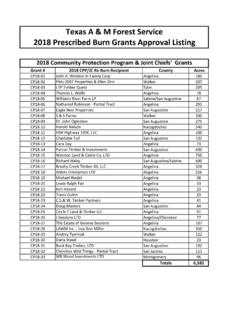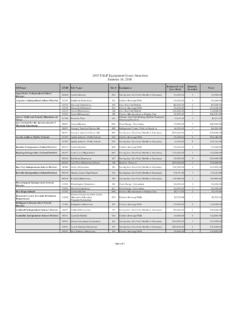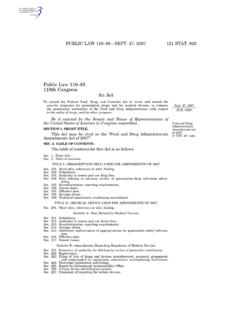Transcription of School Budgets 101 - AASA
1 Page 1 School Budgets 101 Any local government or agency including public schools uses its budget to describe its program plans for the upcoming year. This brief written to help expand familiarity with and understanding of School Budgets and the role of various levels of government is a bird s eye view of School Budgets and answers the following questions: Who is involved in the School budget ? What is the role and purpose of the School budget ? What are the major budget categories for School districts? Where do the resources for School Budgets come from?
2 When are School Budgets spent? How is this information related to the current federal budget proposal and economic realities at the local level? The content and information presented here is a general overview of School Budgets . As such, specifics will vary between both states and districts. As you work through the rest of this white paper, keep in mind that at any given time, School districts are likely managing three Budgets : finishing audits/evaluations and final details of the previous budget , operating and monitoring the current budget , and planning for the next budget .
3 Overview: While the concept of Budgets is common across professional sectors and fields, the budget process in public schools has noticeable differences that impact how districts allocate and prioritize their funds. For example, while most public and private organizations and businesses have 35 to 40 percent of their Budgets tied to personnel and benefits, the comparable number in public schools is, on average, more than double, between 80 and 85 percent. Further complicating districts ability to address budget priorities, the remaining 15 percent of their Budgets is oftentimes impacted and limited by state, local and federal mandates related to everything from building codes to class size requirements.
4 The School budget involves many different individuals and entities across several levels of government. The budget and accompanying process provides School districts and their leaders with an opportunity to justify the collection and expenditure of public funds. School budget resources come from a combination of local, state and federal contributions. The 2006 07 School year is the most recent year for which we have a full tabulation of the education funding contributions split between local government ( percent), state government ( percent) and federal government ( percent).
5 School Budgets are spent continuously throughout the year. Federal dollars in School Budgets are also spent throughout the School year, with the rule of first in, first out. That is, money is spent in the order that it is received: A School district cannot spend any of its Title I funds for the 2011 12 School year until it exhausts its 2010 11 School year. Prepared by Noelle Ellerson, Policy Analyst, American Association of School Administrators, AASA White Paper: School Budgets 101 Page 2 AASA applauds the Obama Administration s continued support for and investment in education within President Obama s 2011 budget proposal.
6 The emphasis on improving teaching and strengthening teachers and School leaders is an important step toward long term positive change in our schools. AASA also applauds the significant increase in funding for ESEA. That said, AASA is concerned with the level funding of both Title I and IDEA for FY11, along with a significant increase in the proportion of discretionary education dollars deemed competitive. Who is involved in the School budget ? The School budget involves many different individuals and entities across several levels of government.
7 At the local/district level, budget discussions and work will involve School administrators, School boards, School employees and community members. At the state level, the governor, state legislators and state education agency are involved for their role in setting and managing state funding and state policy, including state equalization formulas. At the national level, the federal education department and members of Congress are involved for their work around education funding and federal policy, such as Title I or IDEA.
8 What is the role and purpose of the School budget ? The School budget and accompanying process provides School districts and their leaders with an opportunity to justify the collection and expenditure of public funds. In its most simple definition, a School budget describes a district s plan for the upcoming year as related to anticipated revenues and expenditures. School Budgets allow districts to translate sometimes intangible missions, operations and objectives into reality by outlining and providing specific programs and funding/financial terms.
9 A School budget helps bridge the gap that can exist between a district s stated goals and resource allocation. The budget process forces the discussion that will inform choices among various programs competing for the limited available resources. As WilliamHartman writes, key steps of the School budget process include, ..establishing the district s objectives and priorities; allocating resources; involving the public through budget hearings, School board decisions and other means of representative democracy; and, in some states, conducting budget elections.
10 (Hartman, 1999). What are the major budget categories for School districts? While specific budget lines and items vary district to district and state to state, there are broad general categories that apply to most schools. These categories include, but are not limited to: Transportation buses and drivers to transport students Facilities to ensure students attend schools that are clean and well maintained Energy the School is lit during the day, heated in the winter and cooled in the summer Health and Safety the School nurse cares for the ill student, and security measures keep staff and students safe Instruction students have a qualified teacher, teachers have instructional aides, and classrooms have supplies Curriculum and Staff Development curriculum.








